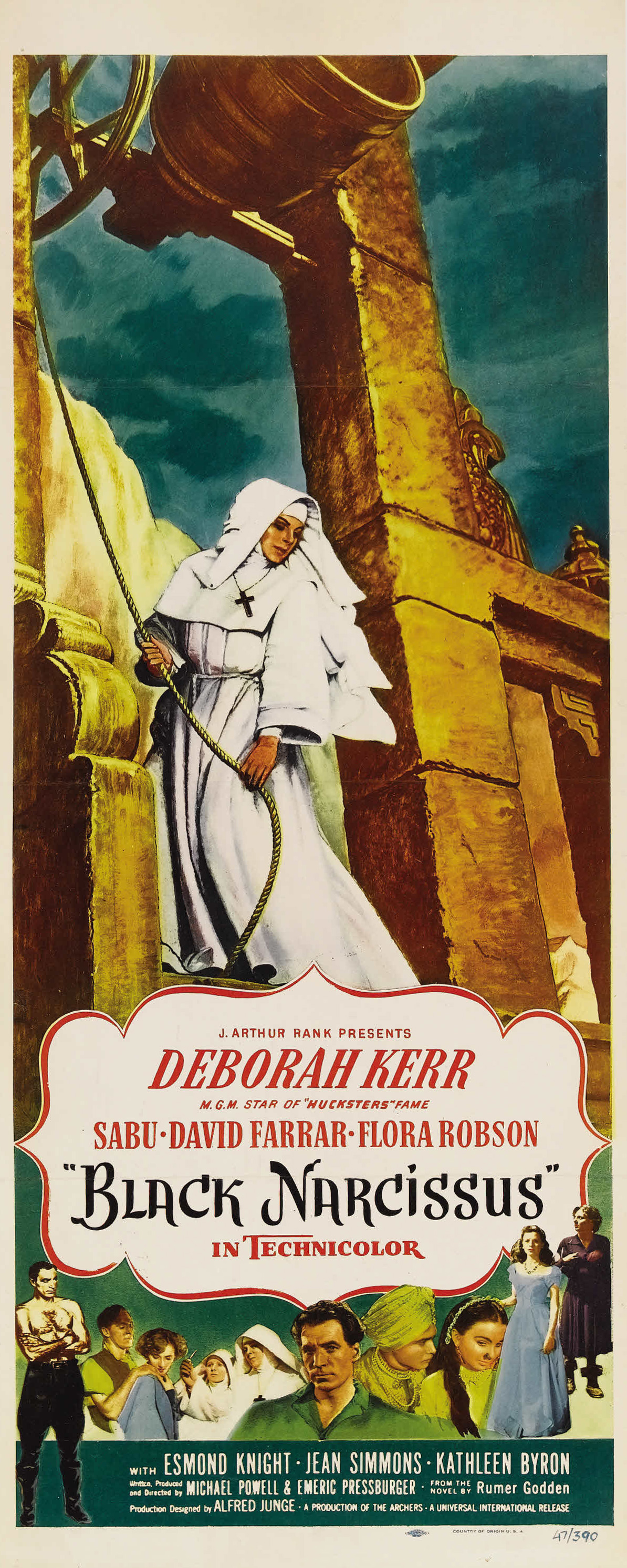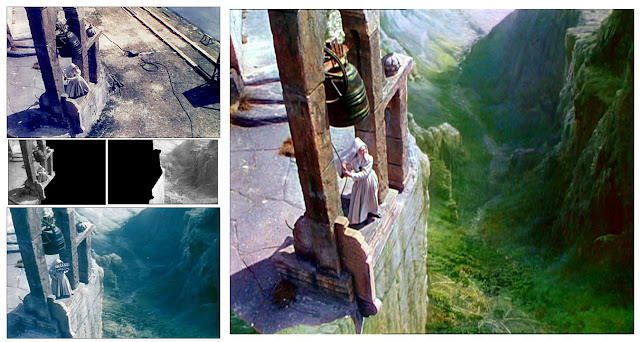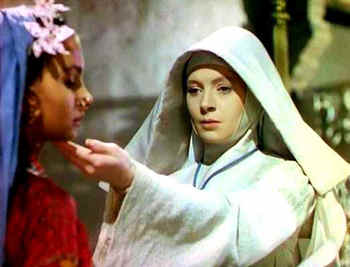 |
| Fig 1 |
The shining is another
Stanley Kubric film from 1980 and is a physiological horror about a man slowly
loosing his mind in the a cabin far away from anywhere with his son and wife. The
Shining is one of Kubrick's most iconic movies all of time with it's most
famous scene with Johny coming through the door of the bathroom with the axe. But
it is also well known for its stunning interior design, Ryan Lambie had
explained how the colour can affect was used an audience within the interior design, “Kubrick
uses violent contrasts of colour to heighten the feeling of unease” (Lambie, 2011). One of the best
examples of this is in the carpet of the cabin (Fig 2). The contrasting colours
help the audience maintain that sense of unease and discomfort that is seen throughout
the film. Kubrick is also well known for his one point perspective and this
tends the cause the audience the feel perturbed and causes discomfort within the
viewer.
 |
| Fig 2 |
This pattern uses contrasting colours to cause
uncertainty but it also reinforces that the cabin is a like a maze where in
the design it is designed to be in a maze like fashion, to once again reinforce
that sense of entrapment. Although it is strange how different the interior
designs where in comparison to most horror films with it's cliché setting, it
seemed to be authentic and more designed like a labyrinth, this was explained
by Kubric himself, “We wanted the
hotel to look authentic rather than like a traditionally spooky movie hotel.
The hotel’s labyrinthine layout and huge rooms, I believed, would alone provide
an eerie enough atmosphere. This realistic approach was also followed in the
lighting, and in every aspect of the décor,” (Kubrick, 1981). This
approach of making the sets to look more realistic and not to rely of the heavy
of use of lighting to create a sense of ease within the film is a very unique way
of portraying horror and isolation towards the audience and this is what makes Kubrick stand out with his attention to detail to provoke these emotions.
 |
| Fig 3 |
One aspect of the film is each room has a difference
appearance and different use of symbolism with the scene. One of the most
iconic and yet most confusing scenes is the scene with the blood coming out of
the elevator (Fig 3),what Emma Dibdin says about this scene is, 'The moments that remain most terrifying are those that don't actually further the
narrative at all in a traditional sense
- the blood-gushing elevators’ (Dibdin 2012). Although that it could be
argued this scene could almost be the 'belly of the beast' and although there
is no mention of the house being alive is does seems to have an eeriness about
it that leads to audience to believe that perhaps this house is the one in
charge and is in fact a 'alive' in terms of the narrative. Although at the face
of it the scene that seem to have an importance to plot as said by Dibdin but
it could be argued to once again reinforce that sense of entrapment and unease
that the film is flourishing throughout.
Illustration Lise
Fig. 1. The Shining Poster (1980) From: The Shining Directed by: Stanley Kubrick [Poster] United
Kingdom, United
States. Warner Bros. URL At:
http://www.matthewmiles.co.uk/2011/06/05/the-shining-movie-poster/ (Accessed on 13.12.2013)
http://www.matthewmiles.co.uk/2011/06/05/the-shining-movie-poster/ (Accessed on 13.12.2013)
Fig 2. The Shining Carpet Design, From: The Shining, Directed by: Stanley Kubrick. At: http://drempt.files.wordpress.com/2013/10/the-shining-carpet.jpg (Accessed on 13.12.2013)
Fig 3. Blood coming out of the elevator. From: the Shining, Directed by:Stanley Kubruck.
(1980) [Film
Still] At: http://www.mutineermagazine.com/img/blog/the_shining_blood_elevators.jpg
(Accessed
on: 13/12/2013)
Bibliography
Emma
Dibdin (2012)
The Shining.
In:http://www.digitalspy.co.uk
[Online] At:
http://www.digitalspy.co.uk/movies/review/a434921/the-shining-review-extended-cut-packs-in-more-psychological-terror.html (Accessed
on:13/12/2013)
Lambie, R (2011) Iconic Set
Design: The Shining. The Shining Overlook hotel at: http://www.denofgeek.com/movies/18283/iconic-set-design-the-shinings-overlook-hotel
(Accessed on 13/12/2013)
Kubrick, S. (1981) Kubrick
on The Shining
http://www.visual-memory.co.uk/amk/doc/interview.ts.html (Accessed
on 01/12/13)















































